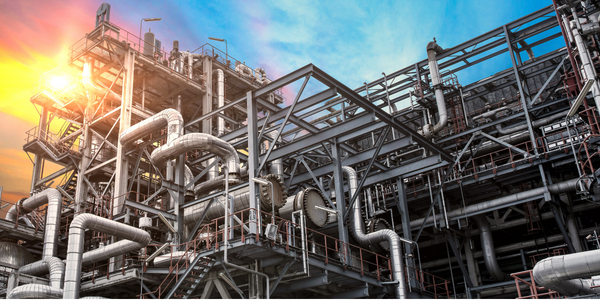Technology Category
- Analytics & Modeling - Process Analytics
- Analytics & Modeling - Robotic Process Automation (RPA)
Applicable Industries
- Oil & Gas
Use Cases
- Process Control & Optimization
- Time Sensitive Networking
Services
- Training
About The Customer
The customer in this case study is an ASX-listed energy company based in Australia. This company is a highly respected, integrated coal and gas company, safely and sustainably delivering a world-class CSG-to-LNG project on cost and schedule. The company had a significant number of business processes that involved the completion and approval of paper-based forms. These processes were causing delays and inefficiencies, leading the company to seek out more agile, digitized solutions. The company's goal was to increase productivity and reduce process completion times.
The Challenge
The Australian energy company, a respected integrated coal and gas company, was facing significant challenges with its business processes. A large number of these processes involved the completion and approval of paper-based forms, leading to delays and inefficiencies. The company was in dire need of more agile processes to eliminate these delays. The manual execution of processes resulted in completion rate delays, reduction in productivity, inconsistent storage of data about the status of the process, the introduction of errors through manual data entry, and issues in status reporting. The company realized that digitizing their workflows and incorporating forms would not only reduce process completion times, but also increase productivity throughout the company.
The Solution
The company decided to deploy over 40 end-to-end automation solutions for processes across various departments. They chose to investigate process automation options to augment their SharePoint implementation. The solutions needed to be developed rapidly and require less effort to manage and support than Microsoft InfoPath and SharePoint workflows. They also wanted software that would provide out-of-the-box functionality such as escalation and delegation. K2 software was chosen for its ability to deliver on all the company’s needs. In the first six months, they developed 26 solutions and have now scaled to more than 40. These solutions ranged from simple forms to populate data fields through integrations with line-of-business (LOB) systems, to more complex processes like training requisition and contractor onboarding that required human interaction.
Operational Impact
Quantitative Benefit

Case Study missing?
Start adding your own!
Register with your work email and create a new case study profile for your business.
Related Case Studies.

Case Study
Taking Oil and Gas Exploration to the Next Level
DownUnder GeoSolutions (DUG) wanted to increase computing performance by 5 to 10 times to improve seismic processing. The solution must build on current architecture software investments without sacrificing existing software and scale computing without scaling IT infrastructure costs.

Case Study
Remote Wellhead Monitoring
Each wellhead was equipped with various sensors and meters that needed to be monitored and controlled from a central HMI, often miles away from the assets in the field. Redundant solar and wind generators were installed at each wellhead to support the electrical needs of the pumpstations, temperature meters, cameras, and cellular modules. In addition to asset management and remote control capabilities, data logging for remote surveillance and alarm notifications was a key demand from the customer. Terra Ferma’s solution needed to be power efficient, reliable, and capable of supporting high-bandwidth data-feeds. They needed a multi-link cellular connection to a central server that sustained reliable and redundant monitoring and control of flow meters, temperature sensors, power supply, and event-logging; including video and image files. This open-standard network needed to interface with the existing SCADA and proprietary network management software.

Case Study
Refinery Saves Over $700,000 with Smart Wireless
One of the largest petroleum refineries in the world is equipped to refine various types of crude oil and manufacture various grades of fuel from motor gasoline to Aviation Turbine Fuel. Due to wear and tear, eight hydrogen valves in each refinery were leaking, and each cost $1800 per ton of hydrogen vented. The plant also had leakage on nearly 30 flare control hydrocarbon valves. The refinery wanted a continuous, online monitoring system that could catch leaks early, minimize hydrogen and hydrocarbon production losses, and improve safety for maintenance.










